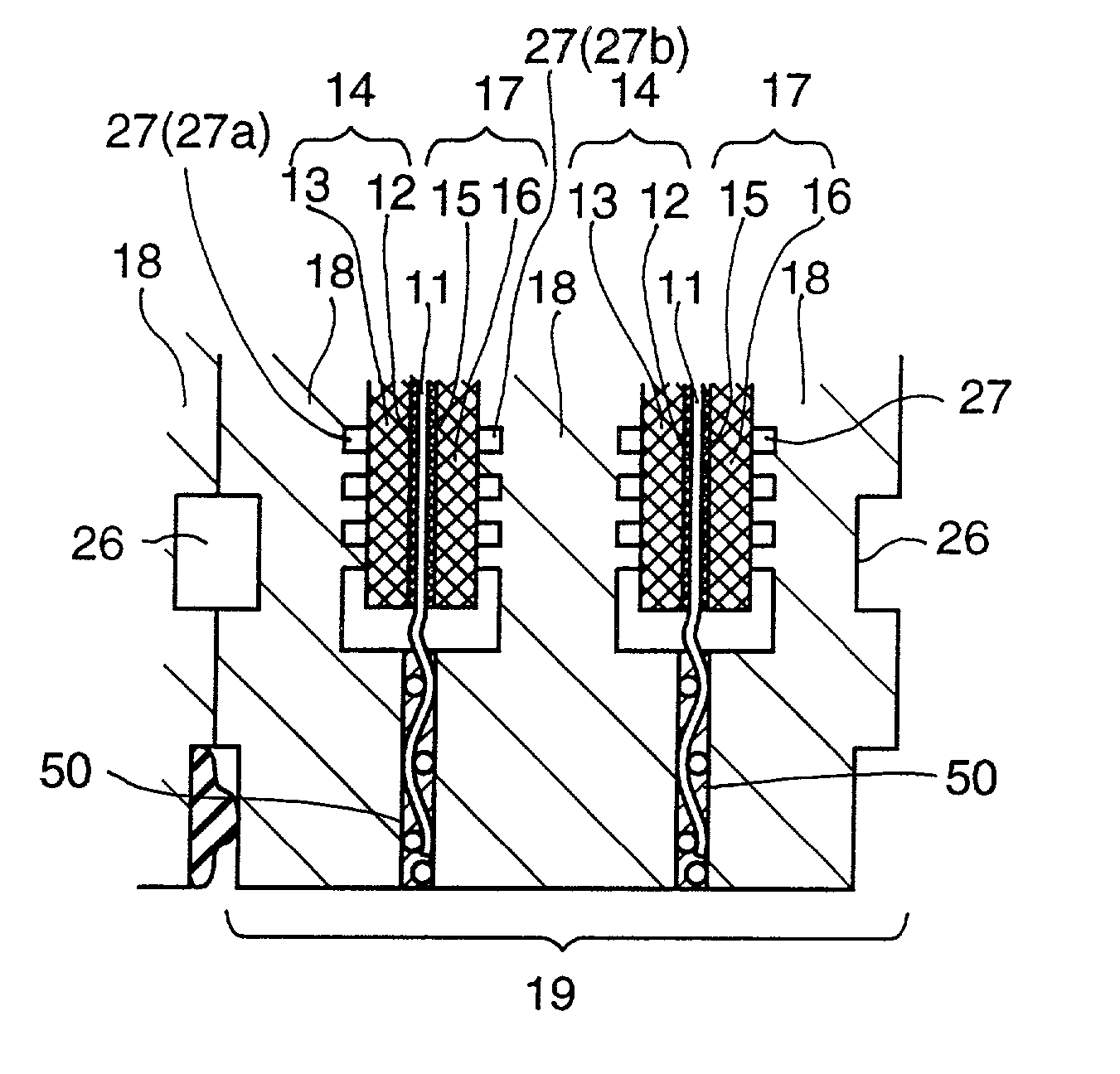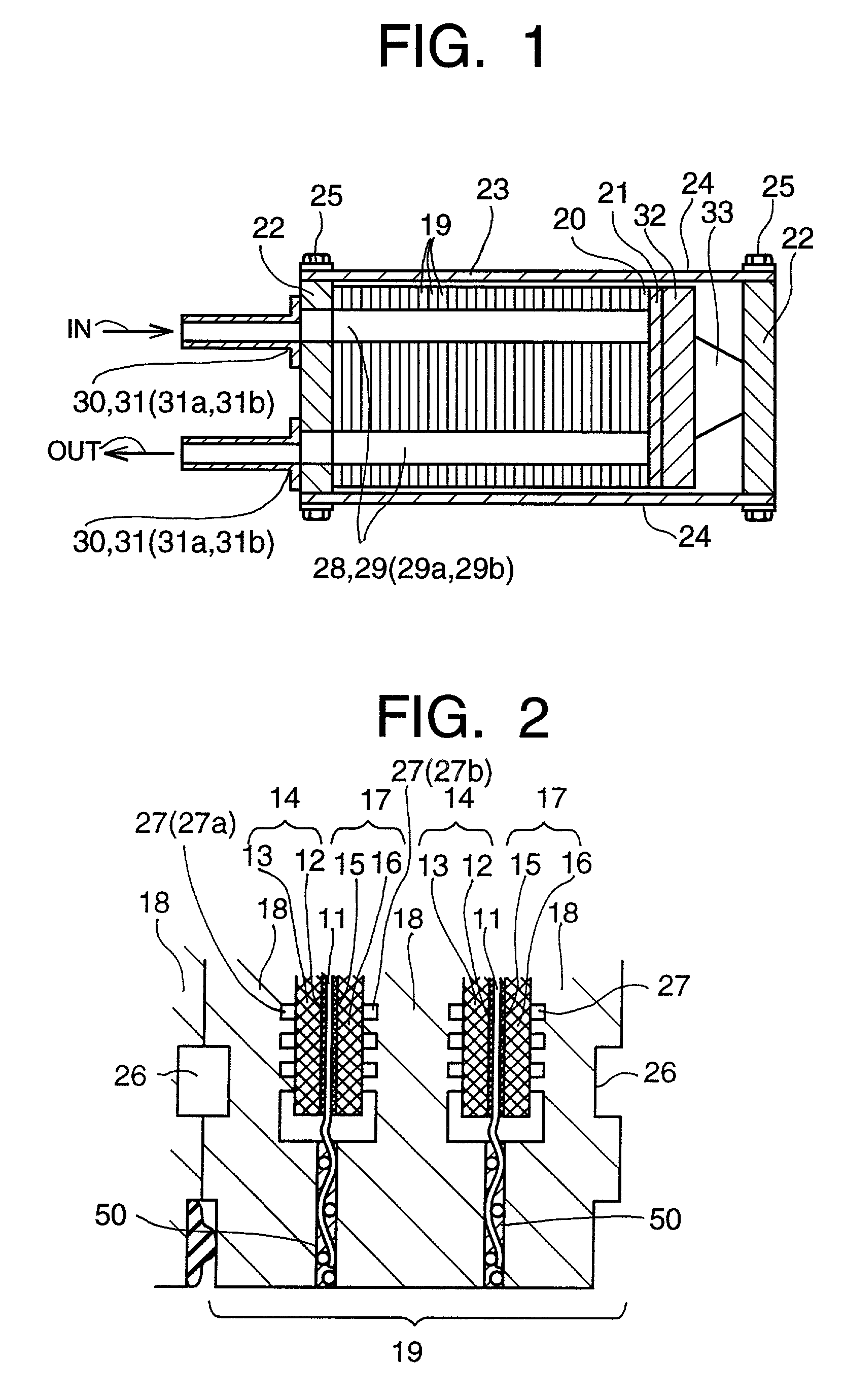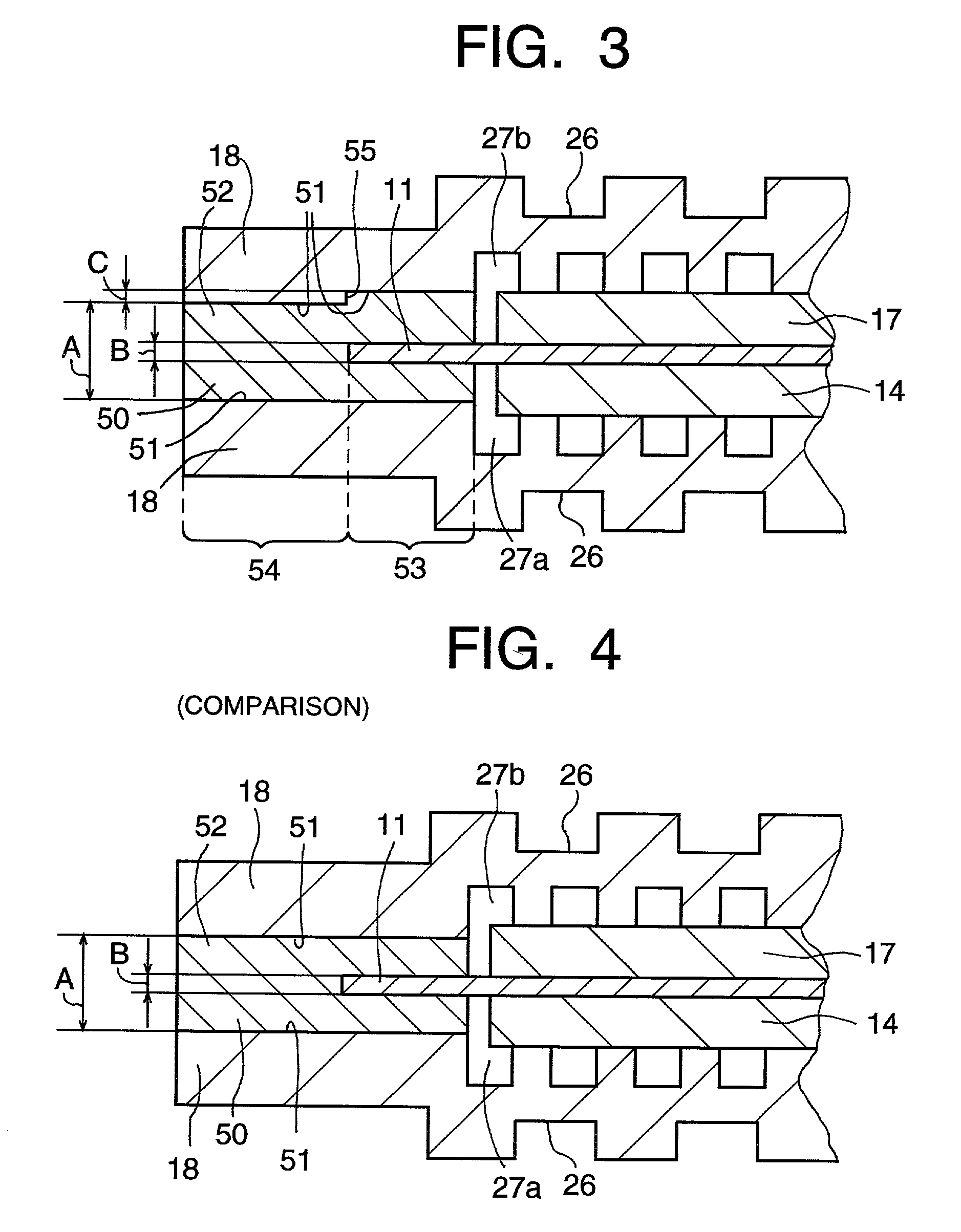Seal structure of a fuel cell
- Summary
- Abstract
- Description
- Claims
- Application Information
AI Technical Summary
Benefits of technology
Problems solved by technology
Method used
Image
Examples
first embodiment
[0047] With the present invention, as illustrated in FIG.3, a first distance (A+C) between the first and second seal surfaces 51 at a first region 53 where the electrolyte membrane 11 exists between the first and second seal surfaces 51 and a second distance (A) between the first and second seal surfaces 51 at a second region 54 where the electrolyte membrane 11 does not exist between the first and second seal surfaces 51 differ from each other so that a first surface portion located at the first region 53 of at least one of the first and second seal surfaces 51 recedes from a remaining, second surface portion located at the second region 54 of the at least one of the first and second seal surfaces 51. The sealant collecting structure is constructed of the first surface portion.
[0048] The first distance (A+C) is greater than the second distance (A) by a thickness (B) of the electrolyte membrane 11, where (C) is equal to (B). As a result, a thickness (A) of the sealant at the first r...
second embodiment
[0054] With the second embodiment of the present invention, as illustrated in FIG. 5, a concave 56 is formed in at least one of the first and second seal surfaces 51 of the first and second separators 18 opposing each other via the electrolyte membrane 11. The sealant collecting structure is constructed of the concave 56 in the second embodiment of the present invention. The concave 56 can be a groove, a recess, or chamfer. A cross-section of the concave 56 can be rectangular, triangular, polygonal, semi-circle, R-shaped, or of a chamfer.
[0055] The at least one of the first and second seal,surfaces 51 has a width and includes an inner portion (a portion closer to the electrode) and an outer portion (a portion further from the electrode) in the width, and the concave 56 may be formed (a) in the inner portion of the seal surface 51 of the separator 18, (b) in an outer portion of the seal surface 51 of the separator 18, or (c) both in the inner portion and the outer portion of the seal...
third embodiment
[0062] With the third embodiment of the present invention, as illustrated in FIG. 6, the first and second separators 18 have sizes different from each other in the direction perpendicular to the fuel cell stacking direction, and the sealant collecting structure includes a space 57 formed outside a side surface of a smaller-sized separator. More particularly, a larger-sized separator extends further than the smaller-sized separator by 3-5 mm, and the space 57 is formed above an upper surface of the larger-sized separator and outside the side surface of the smaller-sized separator.
[0063] FIGS. 9 and 10 illustrate comparisons which are not included in the present invention. If the opposing separators have the same sizes, when the sealant is bulged out to a side surface of the module, the bulged sealant drops and adheres to the side surface of the module. It is necessary to remove the sealant from the side surface of the module by a cutter knife or other devices. If the sealant is bulge...
PUM
 Login to View More
Login to View More Abstract
Description
Claims
Application Information
 Login to View More
Login to View More - R&D
- Intellectual Property
- Life Sciences
- Materials
- Tech Scout
- Unparalleled Data Quality
- Higher Quality Content
- 60% Fewer Hallucinations
Browse by: Latest US Patents, China's latest patents, Technical Efficacy Thesaurus, Application Domain, Technology Topic, Popular Technical Reports.
© 2025 PatSnap. All rights reserved.Legal|Privacy policy|Modern Slavery Act Transparency Statement|Sitemap|About US| Contact US: help@patsnap.com



